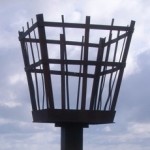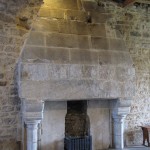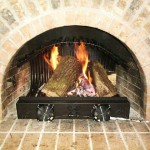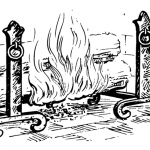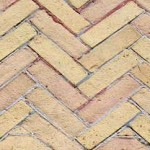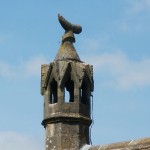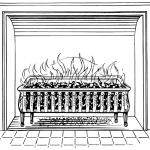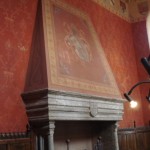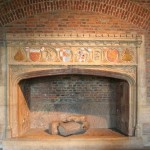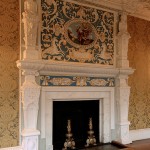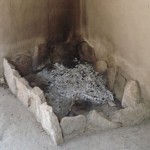Lady of Legend
Brazier/Fireplace/Hearth
Brazier
- A portable heater consisting of a pan or stand for holding lighted coals or peat
- Served as an alternative to a fireplace
- Were sometimes used outside like a huge torch
Fireplace
- Evolved from a hearth
- Was much better at heating a room than a hearth
- Had one or more chimneys to carry away the smoke
- Was rectangular
- Was initially made of stone, although later on brick was more commonly used
- Often had splayed sides (i.e. the side walls were angled so that they were closer at the back than at the front, rather than being strictly parallel), which helped reflect the heat back into the room
- The fireplace was usually located opposite a thick stone wall, which helped reradiate the heat back into the room
- Fireplaces came to include highly decorative arches (at first showed artistic paintings, and later heraldic designs)
- Andirons
- A pair of horizontal iron bars on short legs used to support burning logs
- Usually has a vertical guard bar at the front to keep the logs from rolling off
- This bar gave it a doglike appearance, hence andirons were also known as firedogs
- When used in a hearth, had a guard on each of the sides and rear guard bar as well Were placed parallel to the sides of the fireplace
- Back
- The backs of fireplaces were usually made of stone
- Often had a herringbone pattern to reduce heat absorption After the 15th century, cast-iron backs came into use, which wouldn’t crack under the intense heat
- These cast-iron backs were often decorated
- Chimney
- Carried the smoke outside
- Went up a couple of floors before leading outside
- After the 15th century, cast-iron backs came into use, which wouldn’t crack under the intense heat
- These cast-iron backs were often decorated
- Grate
- A basket made of cast-iron bars arranged to form a grill
- Was very useful for holding coal
- Provided a better draft
- Came into use in the 11th century
- Hood
- A funnel-shaped piece that projected from the fireplace and helped collect the smoke as it drifted out of the fireplace, redirecting it back up the chimney
- Was made of stone or plaster
- Allowed fireplaces to be thinner (before, they had to be deep enough to allow smoke time to go up the chimney, rather than immediately enter the room)
- Were initially supported by pillars
- The extent of a hood became a mark of status, and they began to project more and more prominently into the room
- Mantle
- A wood, marble, or stone framing around (or simply a shelf above) a fireplace
- Is what the hood evolved into
- a.k.a. Mantlepiece, Mantleshelf, Chimneypiece
- Over-Mantle
- A decorative structure/panel sitting over the mantle
- Usually made of stone, wood, or plaster
- Often displayed heraldic mottos (in Latin), coat-of-arms, caryatids (stone carvings of draped female figures), and other designs
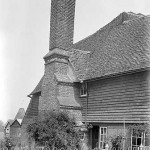
Hearth
- Went out of general use in the 14th century (was replaced by fireplaces)
- Was usually located in the middle of the room
- Similar to a modern-day campfire, except bigger
- Usually encircled by stones to keep the logs from rolling away
- Smoke had to escape out of holes in the roof
- The inside of roofs would become coated with soot, which would stream down the walls if the roof leaked rain
